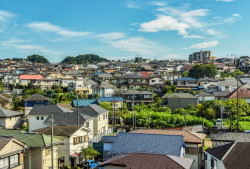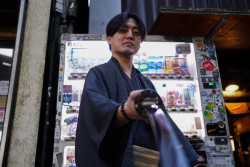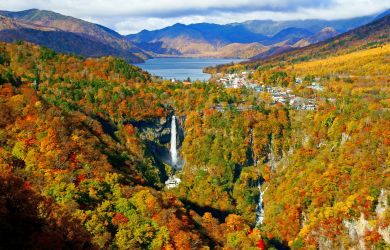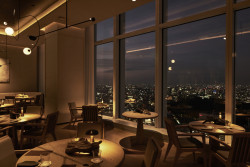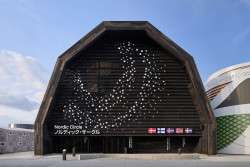
January 7, 2010
Los Luchadores
Step into the ring with Argentina’s amateur sumo wrestlers
By Metropolis
Originally published on metropolis.co.jp on January 2010

Photos by Javier Heinzmann
“When we hold public displays, people normally react with surprise or laughter,” says Sebastián Videla. “But that’s understandable: in Argentina, it isn’t every day that you see sumo wrestlers wearing nothing but mawashi.”
For over two decades, 33-year-old Videla, together with a small band of amateur enthusiasts, has been attempting to popularize a sport that many might not realize was even practiced outside Japan. Every weekend, he goes to the Okinawan Center of Argentina in Buenos Aires to train at the country’s sole clay dohyo.“Once the public demonstrations start and people see what we can do—the rapid movements, the drills, and how tough it all is—you notice a real change in their attitude,” he says. “The atmosphere becomes one of respect, enjoyment and admiration for the wrestlers and their efforts. At the end, we always get members of the public who want to find out what sumo is like, and invite them to fight with us.”
Amusement and curiosity are natural reactions to a sport that, in Argentina, is still relatively young. The history of sumo in the country can be traced back only to 1985, when it began life as a club run by the Japanese Association in Argentina (AJA). Two years later, it went independent, and a dohyo was established in the Jardín Japonés, a cultural center run by the Argentine-Japanese Cultural Foundation.
“At the time, Japan had begun a big push to promote the sport in Western countries,” recounts Videla. “One of its main aims was to create a world tournament, which would begin with the development of tournaments in each continent.” When the Jardín was remodeled in 1997, aspiring rikishi moved to their current home, on the invitation of judo sensei Juan Carlos Yamamoto and Marcelo Pereira.
Like many of the wrestlers in Argentina, Rodrigo Menehem came to sumo from judo. “Both of the sports originated in Japan, so I was already familiar with that type of fighting,” he says. “Also, the rules for sumo are simple, so it’s easy to start fighting properly after just a few months of training.”
[slideshow id=3 w=650 h=433]
Menehem’s own wrestling career began in 2002, and he has since gained a reputation as one of the country’s top fighters.
“Personally, it’s the sport I enjoy the most, because it combines strength, speed, technique and, above all, the chance to practice and share experiences with friends.”
Though it has ties with the local Japanese community, Argentina’s sumo world currently only has one active wrestler with a Japanese background: Gabriel Wakita, who is also president of the country’s sumo association. “There were others in the past,” says Videla. “We’re constantly working with the Japanese community, and hope to get more kids of Japanese descent involved. We think that all the nikei youth in Argentina should have the opportunity to practice sumo, at least on weekends, because it’s the national sport of Japan and was the entertainment of their ancestors.”
That may take a while. With schools and wrestlers both thin on the ground—there are thought to be around 50 fighters in the whole country—sumo remains a comparatively minor concern, and tournaments are something of a rarity.
Still, thanks to the support of private investors and City Hall, the 14th South American Sumo Tournament was held in Buenos Aires last October. Each country fielded teams of three male and female wrestlers, with Brazil coming out on top in both competitions. Argentina placed second in the men’s event, though Videla was also impressed by the spirited performance of the women’s team.
From here, he says, things can only get better. “Just look at Europe for an example of the forces at work in sumo: at the professional level, there are wrestlers from Bulgaria, like Kotooshu, and Estonia, like Baruto.”
It may be a while yet before we see any Argentinean wrestlers enter the ring at Ryogoku Kokugikan. They could beef up a bit, for starters. “As we’re amateurs, we don’t have a special diet like the professional fighters in Japan,” says Menehem. “But we do eat properly, especially before a competition. It’s essential to be strong and agile, because the physical training is extremely rigorous.
“We’ve sometimes shared chanko nabe amongst the wrestlers, too, out of respect for Japanese tradition. In this sport, as in any other, it’s really important to promote an atmosphere of camaraderie.”
